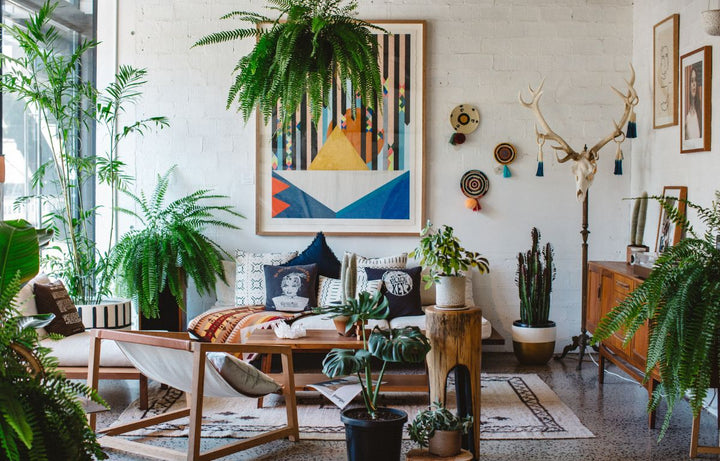
The Evolution of Indoor Plant Culture
The Evolution of Indoor Plant Culture
Dating back to Roman times, growing a plant indoors was something reserved for the upper classes to display opulence, luxury, and wealth. The more abundant and vibrant the plants were, the wealthier and more influential you were in society. Unless you are lucky enough to get your hands on a coveted Monstera deliciosa variegata, money and status are not usually what draws most obsessed plant lovers to collect plants in the tens if not hundreds. In actuality, the benefits of having indoor plants have little to do with our wallets and more to do with our overall well-being.
Caring for plants can be therapeutic, increase wellness and mindfulness, and is often used as a meditative aid. The act of watering the soil, cleaning the leaves and even talking to your plant can bring about a more restful heart rate. This reduces the production of anxiety and stress hormones which makes us feel calmer and less jittery. This can also increase our focus and productivity by decluttering our minds and resetting our thoughts to a more orderly and less scattered form.

Plants are natural air filters. Plants use carbon dioxide, water, and sunlight to produce nutrients to grow. As a by-product, it releases filtered oxygen for a less polluted atmosphere and cleaner air. Plants that don’t flower usually have low or no pollen production, so they are usually safe for even those of us who suffer from the most severe hay fever. It is also thought because plants improve air quality, they also improve physical health too. People are less likely to fall ill and have a faster recovery rate after a medical procedure.
Plants are also natural insulators and reduce noise pollution. This is why many English Tudor and Edwardian homes are covered in English Ivy as the plant not only prevents airflow from escaping or entering through cracks in the walls of the building. It also absorbs UV from the sun to naturally regulate ambient temperatures. Nowadays, buildings usually have automated air conditioning and heating, however, those with an abundance of indoor plants require heating and cooling less frequently and for much shorter periods of time throughout the year. Indoor plants can also make smaller rooms appear larger in size and feel airier and less stuffy.

Our plants often affect our moods. Studies have shown that people who own a few plants tend to be happier in their day-to-day lives and form the same attachment to their plants as they would a pet. Similarly, we generally feel joy and success when our plants survive but are sad and disheartened when they get sick or die. This is an innate biological association that stems back to our hunter-gatherer days in which an abundance of flora meant basic survival. The urge to nurture plants to prosperity is still in our DNA, but with our fast-paced modern lives, we’ve adapted this into the home for convenience.
People who love plants often form stronger communities. In most cases, plant enthusiasts are keen to share their knowledge, tips, and tricks on how to care for all varieties of plants, not just indoor ones. There is also a wide range of online sources from online chat forums to video blogs, as well as numerous in-person community groups where you can even share cuttings for free or buy them for a fraction of the cost to purchase at a nursery.
Not only is it proven that plants bring about a happier and more peaceful mindset but with so many health benefits, it's no wonder indoor plants have been increasing in popularity. With our ever-increasingly fast-paced lives, the trend is unlikely to fall anytime soon!
You may also like to read 5 Self-Care Tips for a more Grounded 2023
